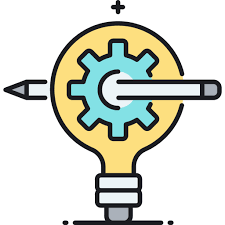Regression can also be used to demonstrate relationships between any number of independent variables. There are two ways of using this statistical method: first, the normal regression method, and second, the logistic regression method. The normal regression uses all of the variables for the dependent variable, while the logistic regression uses only one independent variable and all of the dependent variables as its dependent measures. The difference between the two is that with the logistic regression, you have to multiply all of the output data by the corresponding logitics values to get the statistically significant difference. The normal regression, on the other hand, uses the normal values for all of the variables.
You may be asking, how does regression help predict sales. How do regression results help predict sales? Regression models are extremely useful in the analysis of sales because they are able to fit extremely well (nearly perfectly) the non-linear relationships among several independent and dependent variables. This allows regression models to very accurately forecast predicted sales using a finite amount of data.
A regression model is a mathematical model that is designed to fit a non-linear relationship. For example, the national gross domestic product growth rate, along with various other explanatory variables, are all estimated according to a normal distribution using the data typically drawn from the U.S. Census. If the distribution is normal, then the data will be linearly distributed. Once the variables for the regression model are estimated, all of the data points will lie on a mean line.
One way that regression can be used to examine the relationship of the explanatory variables to the dependent variables is to assume that the independent variables are correlated. regressions can also be used to examine the correlation between the dependent variables and the dependent outcomes. All of the data points should lie on a mean line so that we can plot them on a graph. We can use the information derived from the regression analysis to examine the effect of changes in one or more of the variables on monthly sales for a set number of months.
There are many different ways that companies use regression to examine the relationships among their variables and their corresponding monthly sales. Most companies use regression to predict the effect of increases in one or more of their variable, independent from other changes. For example, if the company wants to predict increases in their sales revenues, they would first have to identify which of their products are popular with consumers. Then they would have to find out what happens to those customers when they make changes in their shopping habits. Once the customer makes a purchase of a product that is popular with them, they will typically experience an increase in their monthly sales.
Some regression analyses simply allow the intercept to be controlled by the independent variable. The intercept now controls the effect of the dependent variable on the independent variable. Let’s say that there is a standardized sales tax in California. In regression that standardized sales tax will be correlated with the average gas prices in California and with the unemployment rate in California.
The slope of the regression line will reveal the changes in the dependent variable and the changes in the independent variable as they change in time. If the slope of the regression line is negative, then the changes in the independent variable will be negatively correlated with the changes in the dependent variable. In this case, the slope of the regression line is negative because the unemployment rate is going to go down and the standardized sales tax is going to go up. In this case, we would say that the gas prices dropped and the recession was negative for California because it was going to drop.
